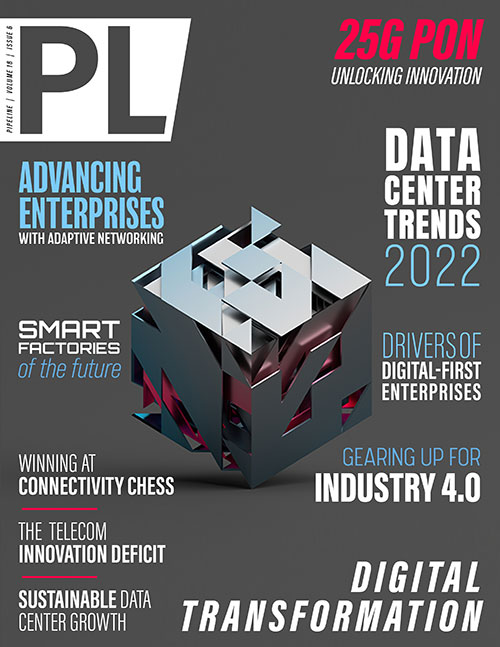Data Center Growth Depends on Sustainability
By: Trent Anderson

It is difficult to find an industry that has been impacted by the need for sustainability more than data centers. Storage capacity requirements are growing, and 90 percent of organizations are putting their data in the cloud. With the demand for connected data increasing from users, data center providers should focus on taking steps to reduce, if not eliminate, their carbon footprint while meeting the rising demand for connectivity services.
Increased need for data connectivity
Data centers are not a luxury but a necessity for our daily lives as we face a virtual shift, driven by the need for instant, real-time data. We have seen the rise in the increase of data through industries like telehealth and content marketing, not to mention the slew of businesses that use data centers within their work-from-home (WFH) operations. Data centers need to work efficiently to ensure these businesses can operate constantly while at the same time ensuring they implement sustainable practices, from power consumption to recycling. Data centers are the crossroads for connectivity; as the need for connectivity increases, so does the need for data center capacity and scalability. Data centers are expected to grow at an annual compound growth rate of two percent per year.
Facebook alone is building 47 new data centers in addition to its current 18 worldwide data hubs. While individuals and companies alike are taking advantage of the many benefits of data facilities connecting us, this comes at a price. As companies expand their digital footprint, it increases their carbon footprint if data centers continue to slack on prioritizing and implementing sustainable solutions throughout their day-to-day operations. Some reports estimate that the entirety of the data center industry uses 90 billion kW hours of electricity each year, leaving a significant impact on the environment.
With these facilities consuming a large amount of power and releasing greenhouse gasses into the atmosphere, data centers must become more sustainable to continue the growth at their current rate. Without an increase in eco-friendly facilities, data centers that don’t prioritize sustainability are at risk of losing business as more companies seek to become carbon neutral and sustainability measures become expected rather than a bonus. Hyperscale companies, like Amazon, have pledged to become carbon neutral within the coming decades, which requires data centers to keep up with the critical trend.
Implementing sustainability measures in both the building and daily operations of data centers fosters further growth in the industry, for local communities, and our ecosystem. It’s no surprise that more data center companies are implementing sustainable solutions and making commitments to become carbon negative in the next couple of decades.
Prioritizing sustainability efforts
With a heightened concern about the effects of data centers on the environment, these facilities are increasingly prioritizing the use of renewable energy and creating innovative solutions. This not only makes these facilities run more efficiently and effectively, but also supports the needed growth of data centers for years to come.
For example, many data center operators do not monitor water usage at any level, which raises concern because a typical data center utilizes about three to five million gallons of water per day. Microsoft has recently taken another step in the evolution of its sustainability initiative. The company’s goal is by 2024, to reduce the amount of water used in data center operations by 95 percent and improve its power usage. Reduced water usage in data centers also poses new opportunities. Communities in areas regularly affected by droughts, which have often pushed back against data centers, may be able to welcome these facilities. Alternatively, building data centers in colder climates may even remove the need for water entirely, especially as new technologies emerge. Hopefully, other data center operators will follow suit, tracking and reducing their consumption of water and other resources negatively impacting the environment.
At the same time, only a third of operators monitor their carbon impact or e-waste and its impact on their operations. Again, companies like Microsoft understand they must



















